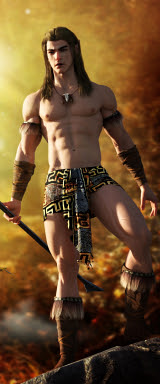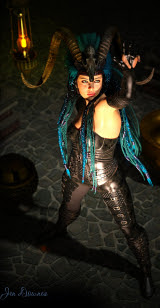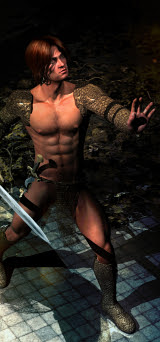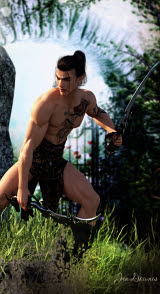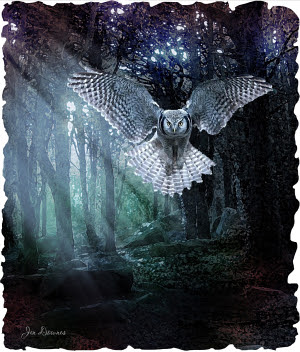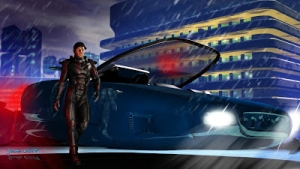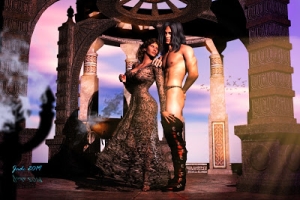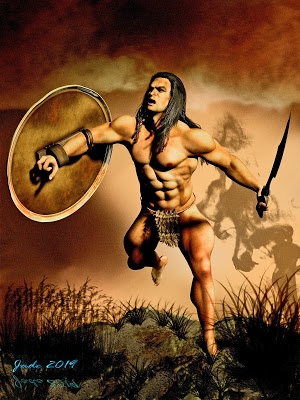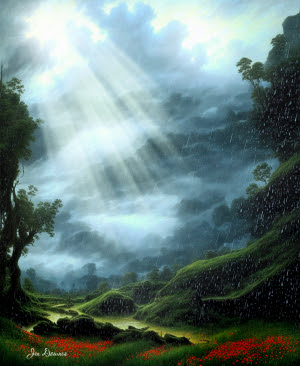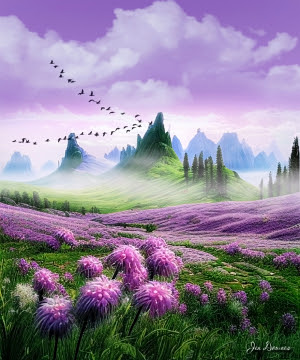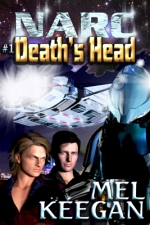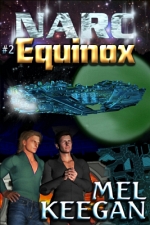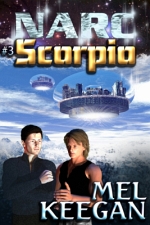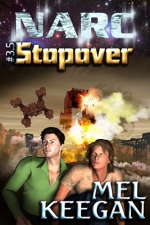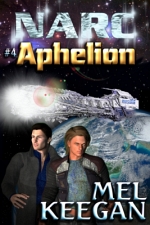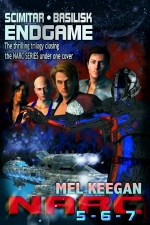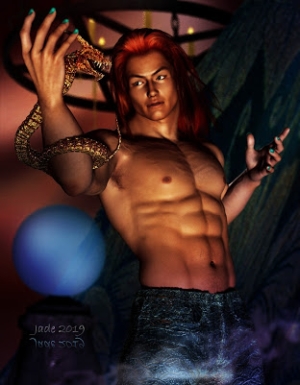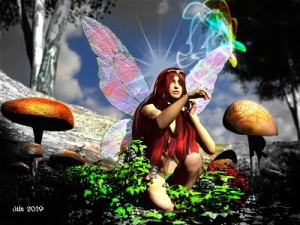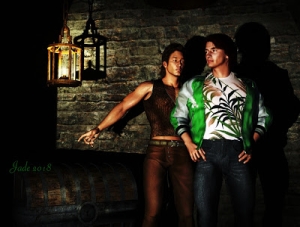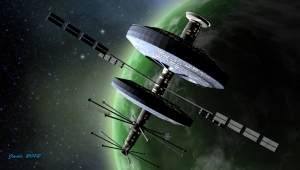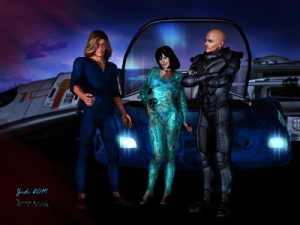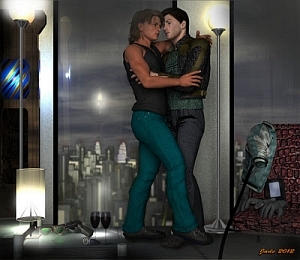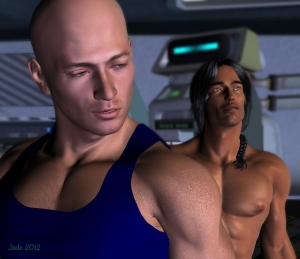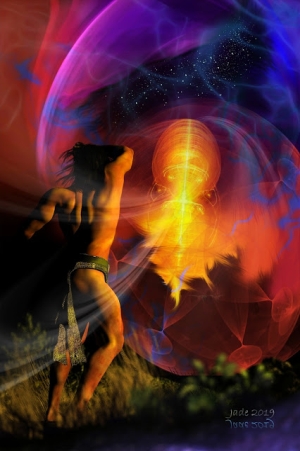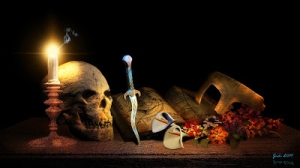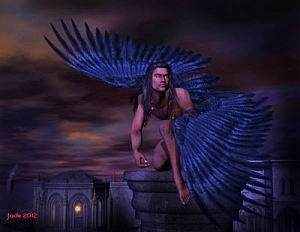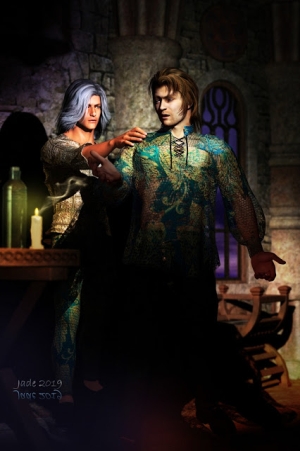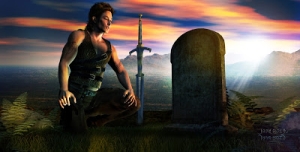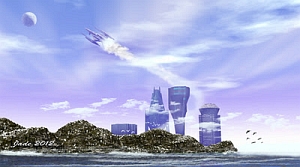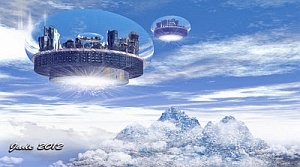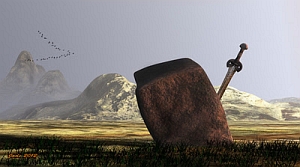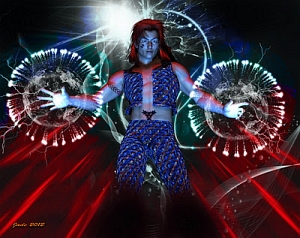Assignment: how much photorealism can you squeeze out of old fashioned raytracing before you get into the more upmarket render engines, like LuxRender and SuperFly?
And the reason I ask this is that I just spent half an hour on the gallery pages at Smith Micro, which is the company behind Poser. Hmm. Well, the fact is, if it's near-photorealism you're looking for...
...you'd actually be fairly surprised what you can do with raytracing, and it's not a million miles away from what you'd expect from one of the top-end engines. I'm asking this question because I have a LOT of images to render, and the version of LuxRender I'm running is slow. The new one is said to be seven times faster, but to get into that would take more than I have to give right now. So we'll just run for the moment on the old system and see how far we can push it.
Which means I need to drive raytracing to the very limits it's capable of! And here we are, experimenting ... actually, jogging my memory too. I confess, it's been a while since I drove the software (have been far from physically well, as you know if you've been following these ramblings), and it turns out you can forget how to fiddle all the details, just as your piano playing can get "rusty" through lack of use.
So, the model I chose to work with was a Michael 4 I developed five or so years ago for a book cover. At the time, the effect we wanted to achieve was ART, not photo, so the render was set up to give this effect:
The object was to achieve something much closer to a painting than a photo. That's two versions of M4. The bratty little imp on the right, and the more mature one -- which is the Michael 4 I chose to work with today. What did I do to make so much difference in him?
First: change the hairstyle. He's wearing SAV Eros short hair today. And then switch out the skinmap. The original dude is wearing the hi-rez Michael 4 "Millennium Man" skinmap, which is always a "go-to" skin when everything else fails. Today, he's wearing SAV Eros:
Out in the field, one can very rarely achieve "studio lighting" effects. There's a reason they scorn it as "available light." Natural daylight tends to be too bright, or too dim, or too harsh, or too blue ... always too something. So let's use this deliberately.
I used just two distant lights, and deliberately overdrove one of them to get the "available light" effect. These lights are bright pale blue and dim soft orange. Shadows are turned on and left hard ... as per camera effects: depth of field is ON. The background outside the viewports is a photo which was blurred and blurred some more, and then blurred again, to match the amount of blur on the walls. I played around with adding film grain and lens flare in Photoshop, then decided not to. I think the render right out of DAZ Studio is good enough.
It'll be interesting to see what happens with this image in LuxRender. They don't always work, as this post shows! Very occasionally, the raytrace looks better. Also, there's a tendency for the Michael 4 "mesh" to collapse or distort. This doesn't become visible in a raytrace, but in a Lux project it can be catastrophic. So ... let's see what happens. Tomorrow.


















